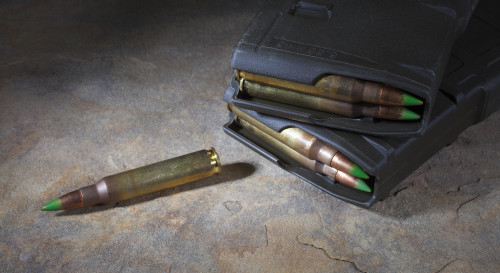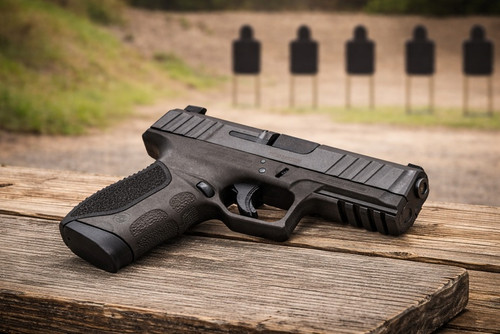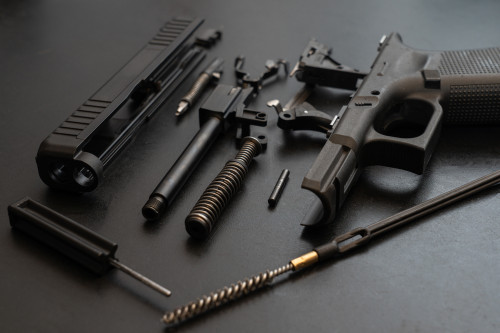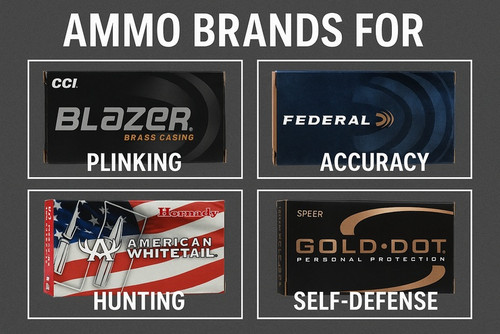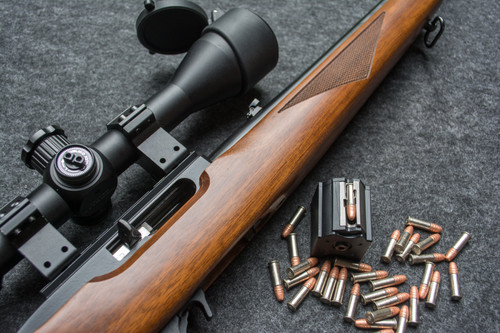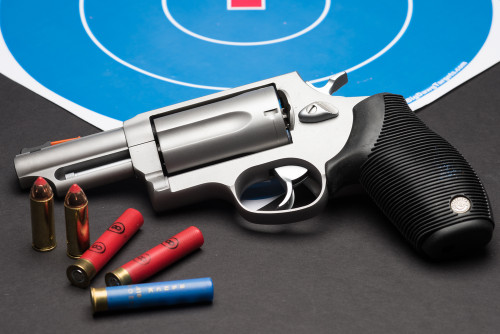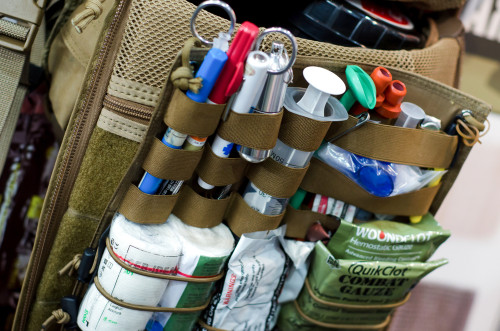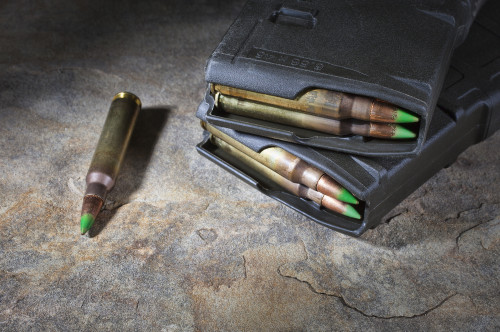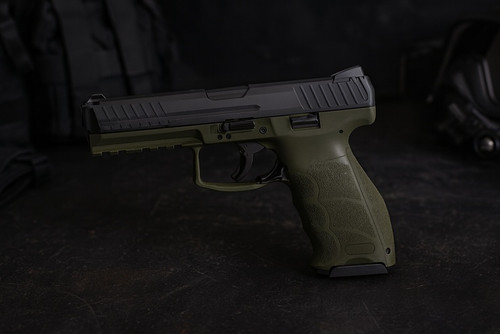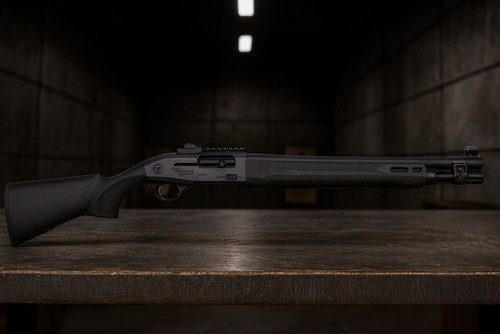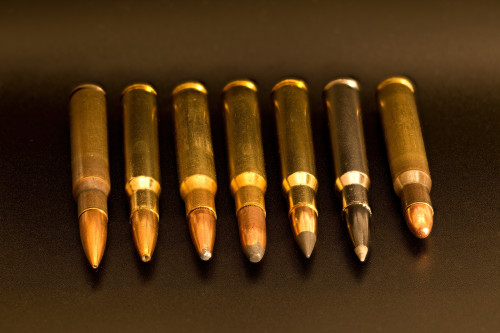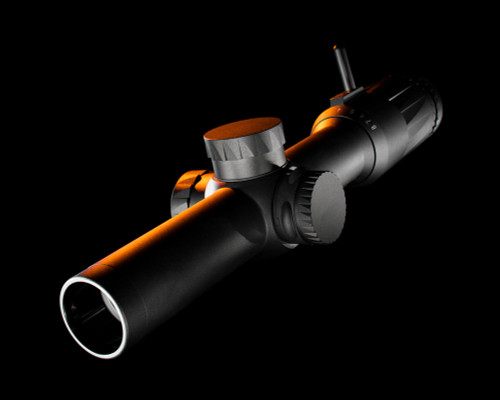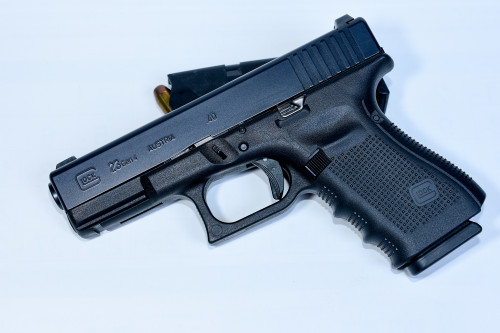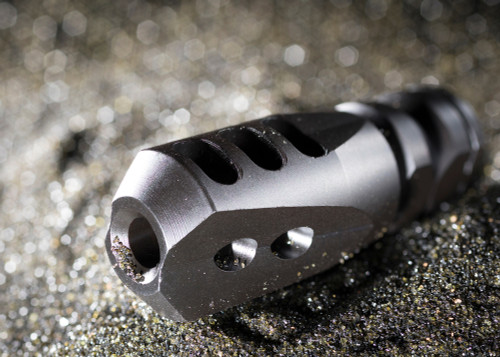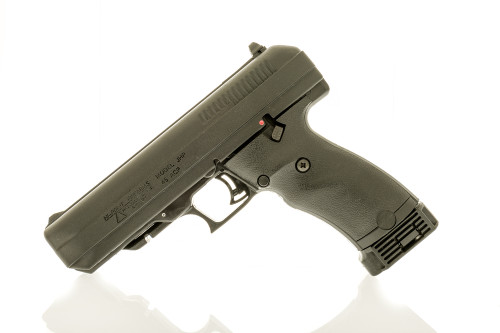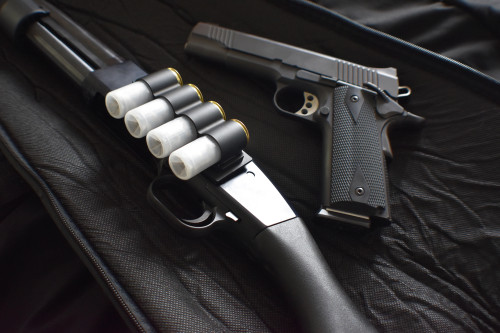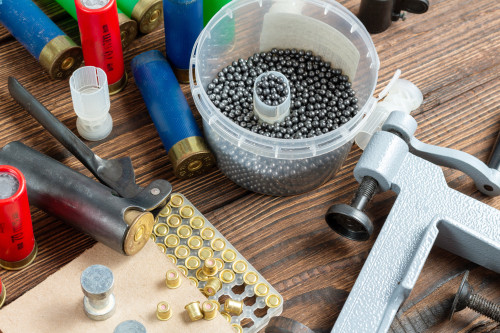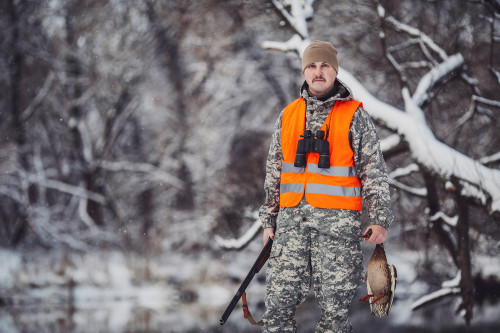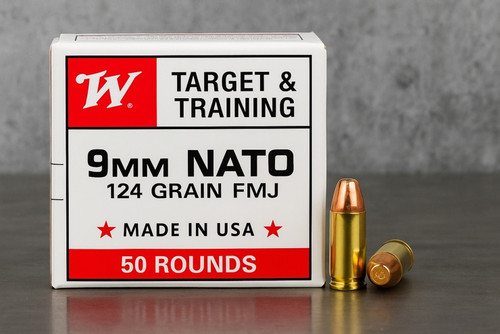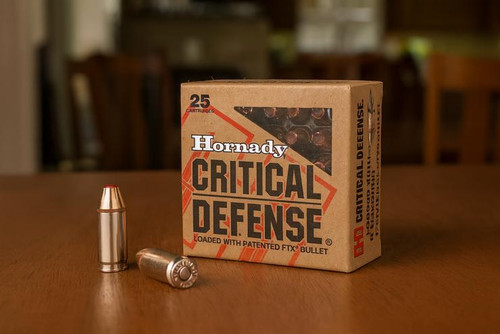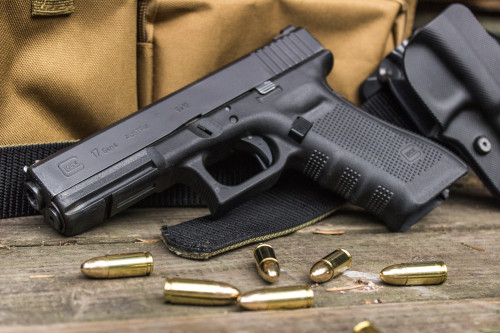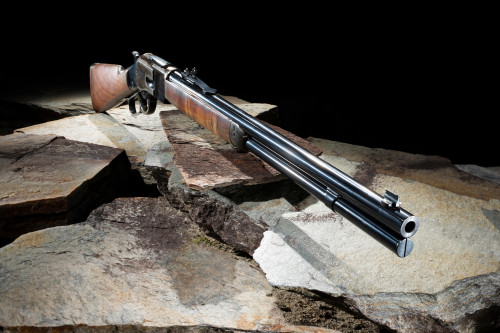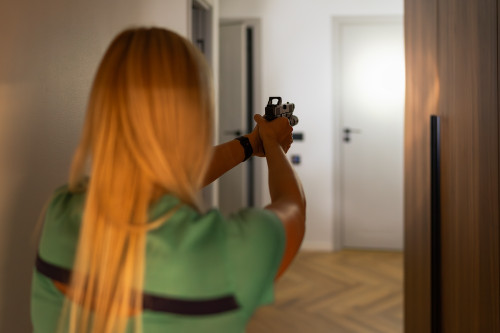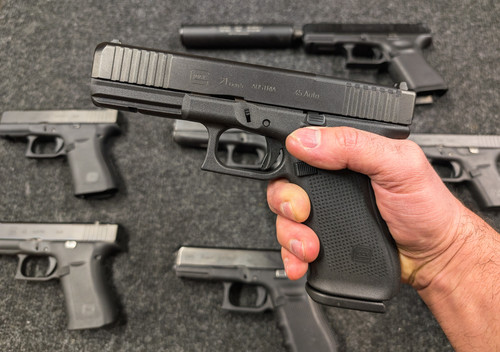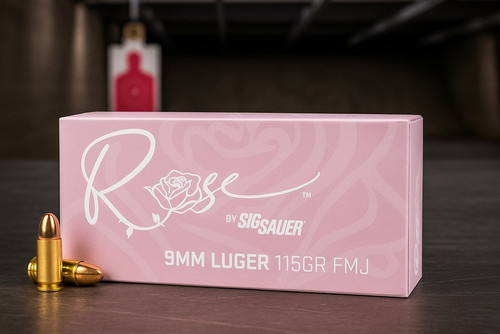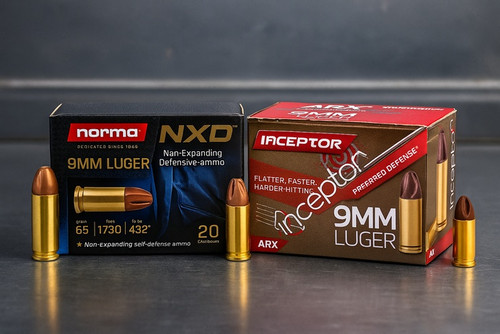As of this writing, an average of over a million firearms per month are sold through federally-licensed dealers (FFLs) in the United States. Many are AR-15s. With its versatility, ease of use, cultural cachet, and all-around utility, Eugene Stoner’s most famous invention is truly “America’s Rifle.”
Most of the time, you will be encouraged to buy some ammunition when purchasing an AR-15. The shop staff will often suggest basic range ammunition in one of two flavors:
- Plain-tipped M193 55 grain 5.56mm full-metal jacket
- Green-tipped M855 62 grain 5.56mm full-metal jacket (with a steel core)
Both are the most common ammunition for the AR-15, and are serviceable for range use (and defensive use in a pinch).
But what if you want something different?
If you go online or visit your local gun shop, you’ll be exposed to a wide array of 5.56mm ammunition for your AR-15, including the familiar plain-tipped M193 and the green-tipped M855, among other projectiles. You’ll see red-tipped, orange-tipped, hollow point, polymer-tipped (in a variety of colors), and perhaps even blue-tipped cartridges.
While the colors on the tips of 5.56mm bullets vary widely and there’s no standard color-coding rule for civilian ammo, there is some commonality between manufacturers and their color codes. To help you make an informed buying decision, let’s take a look at the different bullet tip types, colors, and what each one is designed to do.
The History Of Color Codes
Here’s the truth: Outside of the military, color codes on ammunition often have no real specific meaning other than manufacturer specifications or marketing.
Military Standards and Why They Exist
The only time a colored tip on a commercial round may be “standard” is if the round is also produced for the military. A lot of military ammunition makes it into the citizen sector and vice versa, especially with AR-15s and other rifles that form the basis of military designs.
For example, the 5.56mm M855 “green tip” round popular with AR-15 owners is also produced for the military as a training round. The green tip is a military color code signifying that the projectile is a 62 grain full metal jacket 5.56mm round with a light steel core. While a plain 62 grain projectile might be fine for citizen use, the military needs to spec it out and visually code it somehow.
Origin of Color Coding
Color-coding ammunition is a relatively recent development in the history of munitions. As ammo technology progressed from just FMJ and ball loads, soldiers had to discern between ammunition types, usually when under fire. For small arms ammunition to be acceptable for military use, each type of load must be easily distinguishable for efficient inventory procedures and selection, especially under duress. In an emergency where the ammunition bunker is in disarray, you need to easily grab the right ammo for the task at hand.
Forget scanning the side of containers; you need to find that green-tipped M855 or that dull gray and copper M855A1, both of which stand out and are easily memorized. Or you need the specialized black-tipped M995 armor-piercing ammunition, because something heavy is coming down the pipe. A quick visual cue like color beats random letters and numbers every time.
NATO Color Coding Adoption
Color-coded ammunition matured after World War II, especially with the establishment of NATO. Since NATO is essentially an extension of US military might, allied forces often adopted the same firearms and ammunition as US forces.
However, in the case of ammunition, the ammo was produced locally by each country or region. For instance, the UK wouldn’t acquire a pallet of M855 from the US, but they’d produce it at one of His Majesty’s factories in the Midlands. However, as a NATO requirement, the M855 (known as SS109 across the pond) would need to sport a green tip for quick identification. This ensures interoperability between allied forces, where ammunition and magazines essentially become “community property” during warfare.
If the balloon went up and the Soviet Bear moved west, the Americans, British, and West German forces could rapidly respond, and not get hung up on ammo compatibility problems. US troops could draw from British stocks and vice versa without worry.
NOTE: This usually only applies to NATO forces, as some of our non-NATO allies (i.e. Australia), follow their own standards. Australia’s M855, called “F1,” can turn up on the surplus market. It’s the same as our M855, but without a color code.
Marketing
Ammo manufacturers also color the tips of their bullets for marketing purposes. Recall the brief flirtation with neon green polymer-tipped ammo in the early 2000s. Hornady shipped a lot of these “Z-MAX” for “Zombie MAX,” to capitalize on the zombie movie and TV craze of the time. Z-MAX was nothing special, just Hornady’s normal polymer-tipped ammo in neon green instead of red.
Hornady also does short runs of pink-tipped ammunition, where a portion of each sale goes to a breast cancer charity. Again, it’s pure marketing for the citizen sector. Look at the specs of the ammunition, not the colors, in these cases.
Understanding the Basic Ammunition Types
Now that we understand color codes, let’s look at what really matters: the type of ammo tip. Some color codes on the tips of ammunition are standardized to indicate the following types of ammunition.
Full Metal Jacket (FMJ) aka “Ball”
It’s more than the title of a fantastic war film — it’s also the world’s most common type of ammunition. A full metal jacket projectile is a round with a hard metallic jacket surrounding a softer lead core.
FMJ rounds are used for training and general combat because they zip through barriers and come with a low price tag. However, their risk of over-penetration makes them unsuitable for citizen and law enforcement use.
Hollow Point (HP)
Any competent firearms instructor will recommend hollow-point rounds for defensive use, whether it’s for a rifle or pistol. HPs are designed not to overpenetrate. They’re lead clad in copper or another harder metal, with a hollow cavity where the nose would normally be. They often sport pre-cut scoring on the outside of the projectile to aid in expansion. When the bullet hits the target, the pressure in the cavity causes the bullet to “mushroom” open and rapidly expand in diameter, causing more shock in organic tissue and also slowing down, avoiding over-penetration.
Armor Piercing (AP)
This term is often abused in the non-firearms media space. If you really think about it, most ammunition could be classified as armor piercing, depending on the type of armor. However, in the firearms industry, armor piercing bullets are specifically designed to defeat armor plating.
Armor piercing bullets have a hardened penetrator on the tip (usually steel or a tungsten alloy), surrounded by a copper jacket that helps the round feed and lessens the wear on the gun. The hardened penetrator is what pierces the armor.
Note on Legality
In the United States, armor piercing ammo for handguns is illegal for citizen possession. In rifles, it’s a bit of a gray area. While most rifle rounds are realistically armor piercing (even a humble M855 round can beat most body armor), rounds specifically advertised as such could be contraband. This is because they have been diverted (stolen) from military supply chains.
For example, the 5.56mm M855A1 armor piercing round for the M4/AR rifles is never sold to the public. You’ll see it pop up on websites for sale, usually a small batch for an exceedingly outrageous price (i.e. 5 rounds for $50) and there’s a chance that it’s been stolen from the military supply chain. If it’s legal, it’s usually from a factory demo lot.
Open-Tip Match (OTM)
At first glance, open-tip match and hollow point ammunition both look the same. But while they both have hollow points, their applications are quite different. An open-tip match round is a bullet where the jacket has the opening for the core at the tip rather than the base. This allows the bullet to be constructed to more precise tolerances (hence “match”) for way more accuracy than FMJ or hollow point rounds.
Yes, you can use an OTM round for defensive purposes, as it does have a hollow point, but it lacks the pre-cut scores of a true hollow point round, so expansion is limited. You can keep some OTM rounds for your AR or other rifle for competitions, long range shooting, and so on. But it’s not ethically accepted for hunting. For that, you’ll want hollow point ammunition.
Polymer-tipped “ballistic tip”
Whether it’s Hornady’s FTX or Winchester’s Silvertip ammunition, polymer-tipped ammunition combines a full metal jacket construction with the terminal performance of hollow point. They come in a whole spectrum of colors on their plastic tips (red, blue, green, pink, etc.). However, the colors don’t mean much aside from manufacturer specifications or marketing.
The polymer tip increases the ballistic coefficient of the bullet in flight (i.e. more speed). When the bullet impacts the target, the polymer tip is rammed down into the hollow cavity of the bullet, causing even more rapid expansion than normal, leading to increased terminal performance. The polymer tip can also aid in the “barrier blind” performance of ammunition. This means the bullet will not veer off course as much when encountering an intermediary barrier such as auto glass, fur (on animals), or clothing (on a human threat).
Polymer-tipped ammunition is a modern successor to soft-point ammunition, where a soft metal was used. The latest designs in defensive ammunition, such as Hornady’s FTX or Speer’s G2, use polymer tips and plugs to great success.
Tracer Ammunition
If you’ve seen real-life war footage or crazy videos from citizen gatherings like the Knob Creek shoot, you’re familiar with tracer ammunition. Available for both rifles and pistols, tracer rounds are full metal jacket rounds with a small amount of pyrotechnic material at their base. When shot, this material ignites about 10 meters downrange and produces a spectacular color, usually red or green, which aids in aiming. In military applications, every fifth round in a squad weapon such as the M249 5.56mm machine gun can be a tracer.
Tracers work both ways though; you can see where your bullets hit, but someone else can see where your bullets came from. Of course, as a civilian who rarely sees combat, you’re more likely to think of a tracer round as a nifty outdoor range toy. Note that the pyrotechnic material, usually some sort of magnesium compound, burns very hot, and can even start fires. A lot of ranges don’t permit the use of tracers, or at minimum will forbid their use during the dry season. Get some, but just know the circumstances of your shoot.
Frangible Ammunition
Though they look alike, frangible rounds are definitely not FMJ. A frangible round is made of a compressed metallic powder, and is specifically designed to disintegrate upon impacting a hard object. To prevent ricochet, frangible rounds got their start at the classic shooting gallery games common at fairs and carnivals during the early 20th century. Companies like Winchester designed the “Spatter-Less” bullet, which shattered into dust when hitting a steel target, allowing for a safer experience.
Of course, the military took interest, and picked up frangible rounds for close-quarters training. Troops had to learn how to work in enclosed environments, where a ricochet during training could prove fatal. Modern frangible rounds, such as Speer’s “Reduced Hazard Training” line, are often called environmentally friendly, as their compressed copper nature is less toxic than lead, making for a cleaner shooting experience, especially indoors. Some newer ranges, especially those built in urban areas, actually require frangible bullets, so you’ll want to have some handy for these situations.
Simunition
It’s one thing to train at a gun range, where the targets are paper or steel and static in nature. It’s another thing entirely when the targets shoot back. No, we’re not suggesting you risk life and limb by having your shooting range pal engage you with FMJ or frangible ammunition. “Simunition” is a trademark for a specific type of less-lethal marking ammunition. However, it often refers to any type of low-powered ammunition that sports a small paintball-like round instead of a hard metal projectile.
With specially-adapted versions of handguns and rifles, you can use Simunition to engage in force-on-force (you versus someone else) training. The modified guns go “bang” like a real gun, and there’s recoil, so it feels real. Also, when you get hit with a “sim” round, you will be marked with a paint splotch — and it hurts.
That said, simunition bullets cannot be used in a normal firearm (this is a safeguard to avoid deadly accidents). However, for training, these rounds cannot be beat. The biggest customer for these rounds is the military, which calls the 5.56mm version “M1042.” Sims are becoming big business in the law enforcement and citizen sectors as well. The Army M4 TM has these in blue, yellow, and red paint versions.
Incendiary Ammunition
Out of all the major ammunition types, incendiary is the most spectacular and controversial. Occasionally painted with a blue tip to mimic the blue-tipped large-caliber ammunition the military uses in aircraft cannons, incendiary ammunition generally falls in the “range toy” category for citizens. The projectiles are basically amped-up tracers that continue burning after striking a target.
Of course, this could start a huge fire. You don’t want to be the guy who burns down half of Florida trying to earn extra likes on Instagram. Check your state laws before you buy, as incendiary ammunition can be banned even by specific brand name (such as Dragon’s Breath incendiary shotgun ammo). Featured prominently in John Wick 4, Florida has banned this ammo for decades. If you use incendiary ammunition, ensure you have the proper equipment on hand to douse the targets and prevent flare-ups.
Military Usage
Despite rumors to the contrary, incendiary ammunition is not generally issued to soldiers at scale. Thus there’s no standard incendiary ammunition for small arms in the military. However, you’ll find plenty of small-batch runs of incendiary ammunition in your favorite caliber from various sources online.
US Military Bullet Tip Color Codes
The basic US military color codes for ammunition are usually for small arms calibers such as 5.56mm, but may carry over to other calibers.
No Color Solid Tip
These indicate M193 5.56mm 55 grain full metal jacket rounds. You’ll find M193 on the shelves of every gun shop in the US. Cheap, common, and reliable, it was the original 5.56mm round for the AR-15 and M16.

PMC X-TAC 556 NATO 55GR FMJBT 20RD
$9.88
at Pro Armory
Prices accurate at time of writing
No Color Hollow Point
Hollow point ammunition is not used widely in the military in any caliber, since the Hague Convention considers them “too inhumane”. However, the US isn’t a signatory to the convention, so our forces do get 5.56mm hollow-point ammunition for special operations units, and snipers do choose specific hollow point loads for the task at hand. Typically, these rounds will be plain with no color, since they have such niche, intentional uses.
(Source: https://en.wikipedia.org/wiki/Plastic-tipped_bullet#/media/File:Ballistic_Tip.JPG)
Red Solid Tip
A red tip once referred to M196 5.56mm 55 grain full metal jacket tracer rounds. This is the tracer version of M193. Though it is no longer in production, some of these loads have recently turned up on the surplus market. The specific compound used for the pyrotechnics is known to be harsh on barrels, so use these rounds sparingly. Also, since most rounds are at least 40 years old at this point, inspect them closely.
(Source: https://en.wikipedia.org/wiki/5.56%C3%9745mm_NATO#/media/File:Ammunition_Belt_5.56_mm.jpg)
Green Solid Tip

Pmc 5.56 Nato M855 62 Grain Green Tip Lap
$10.01
at Pro Armory
Prices accurate at time of writing
Green tip refers to M855 5.56mm 62 grain full metal jacket with a mild steel core. This is the popular “green tip” ammunition that feeds pretty much every AR-15 in the country right now. Technically, this is a “light armor piercing” round, but it lacks the terminal ballistics of true armor piercing rounds and dedicated defensive loads. Outside of combat, this is typically used as a training round by both citizens and the military.
(Source: https://www.gunauction.com/buy/17237079)
Orange Solid Tip
Orange tip indicates M856 5.56mm 62 grain full metal jacket tracer rounds. This is the tracer variant of the M855 round. Using more modern pyrotechnic materials, M856 is far less harsh on your barrel than the M196, though it’s not recommended to use heavily in any firearm. M856 shows up usually in the surplus market, or in contract overrun boxes from Winchester.
Purple Solid Tip
Purple tip refers to subdued tracer rounds. Currently there are no 5.56mm purple tip rounds in commercial or military inventories, but you’ll occasionally see other calibers like 7.62x51mm (M276) with a purple tip. This indicates the round is a subdued tracer round, where the pyrotechnic material generates a less-intense light. This is usually for situations where night vision equipment is employed, since a normal tracer round will cause annoying “flare ups” that temporarily blind the wearer.
Blue Solid Tip
Despite popular belief, a blue-tipped 5.56mm round is not the color code for an incendiary round in this caliber. Instead, it means the round is the M862 short-range training round. Designed for less-lethal training, this round is not in common use, since it requires a special bolt carrier group for the host rifle.
However, in other military calibers, a blue tip can denote that the round is incendiary. Usually you’ll see blue-tipped rounds in larger calibers such as .50 BMG. Ironically, some other calibers will then use blue to denote “inert”. The military does break their own standards sometimes.
Along the same lines, if you are to see blue-tipped 5.56mm on the shelves of your local gun shop, it could very well be an incendiary load, produced by smaller ammo companies as a novelty item. Again, if you want an incendiary load, check your local laws, and if you’re good to go legally, make sure you have the ability to extinguish any resulting fires.
(Source: https://forum.cartridgecollectors.org/t/nammo-cartridge-4-ap-cutaway/24554)
Black Solid Tip
Black tip indicates M995 5.56mm 52 grain armor piercing rounds. Sporting a tungsten carbide penetrator, this round is classified as a true armor piercing round by the military.
Legally, it sits in a gray area. There’s no M995 for general sale to the citizen market, so if you see any online, it’s either from a factory demo batch or it was stolen from military inventory. It can only be used in a rifle, as true armor piercing rounds cannot legally be used in pistols. Chances are, if you find any, the cost will be prohibitive.
(Source: https://www.sandboxx.us/news/the-m855a1-inside-americas-new-round/)
Dark Gray (Sometimes Light Gray) Solid Tip
Gray tips often refer to M855A1 62 grain armor piercing rounds. This is the follow-up round to M855. Designed to address the shortcomings of M855 against modern body armor, the M855A1 has also not been released for sale to the citizen market. Much like M995, any you may see online is either part of a factory demo batch or has been stolen from military supply channels.
The projectile itself is either a tin/bismuth alloy or a copper alloy, and can defeat most modern body armor compositions in a single shot. However, the hardened projectile is more harsh on barrels and feed ramps, causing more wear. In response, more modern AR magazines (usually made after 2016) have an enhanced follower, which delivers the round into the chamber at a less-severe angle, so your barrel doesn’t get beat up as quickly.
(Source: https://osmabestet.pics/product_details/31271404.html)
Dark Brownish-Red Tip
These are frangible ammo. As we noted, frangible 5.56mm is made of compressed metallic powder and is explicitly designed for close-quarters training where ricochet hazards are a concern. When the frangible round strikes a hard object, it disintegrates in a puff, rather than bouncing back at an angle. In addition, most frangible rounds produced today use cleaner-burning propellants and primers, since they’re often used in indoor ranges, where air quality is a concern. Some higher-end gun ranges now even require frangible ammunition.
Safety, Performance and Legal Considerations for Color-Coded Ammo
Military requirements in ammunition often trickle down to the citizen sector — including with color coding. Typically, military contractors produce ammunition batches by the millions for the armed forces, and sell the excess to the commercial market.
Because of this, the military specifications and color coding of that ammo are carried over for civilian use. You’ll know immediately whether the AR-15 ammunition is plain old M193 or the more potent M855 load. Or perhaps it's an M995, and it’s legally questionable whether you can possess it at all.
Regular AR-15 Loads
Most common AR ammo loads are legal to possess nationwide. There was an attempt in 2014 to ban M855 by executive order, but due to the scope of implementing such a ban, and the general outcry against it, the ban was not implemented. Aside from New York and California (where a background check is required to purchase all ammo), common AR-15 5.56mm loads such as M855 and M193 are not restricted items.
Armor-Piercing Loads
However, most armor piercing variants on the market such as M955 and M855A1 are likely to be stolen property. If you buy them, you could face prosecution. Additionally, manufacturers won’t put either of those rounds into citizen sales channels, since by law you can’t put armor piercing rounds into a pistol, and AR-15 pistols are a thing. The liability for them is too great.
Besides, there are plenty of more potent and practical 5.56mm rounds available on the commercial market. Polymer-tipped dedicated defensive rounds will, pound for pound, serve you better than an armor piercing load in most citizen use cases.
Incendiary Loads
Along the same lines, always check the laws in your area concerning the use of incendiary rounds. Most sellers of incendiary ammo will not check whether the round is legal for you to use, so the responsibility falls on you.
If the incendiary round is good to go in a legal sense, just remember that it’s also your responsibility to manage any fires or flare ups from its use. Irresponsible users of incendiary and tracer ammunition have caused actual forest fires and hundreds of millions of dollars in property damage. A day at the range for a TikTok stunt isn’t worth that risk.
Conclusions
Whether you’re training, hunting, or using your AR-15 (or AR-15 pistol) in a defensive situation, be sure you have the right ammunition for the occasion. Color codes can help you identify the right round for you, but always remember to check the specs before you buy. Knowing just what kind of ammunition you have on tap will make your experience that much more efficient and safe.
Looking for quality rifle ammo that won’t destroy your bank account? Want to pick up the best in green-tip M855 ammunition for cheap? Stock up on small boxes and bulk cases from Pro Armory — your online ammo and firearms gear supplier. As a veteran-operated business, we carry gear and ammo you can rely on. Our aim is to offer the best online shopping experience for American shooters like you, so you can have more great range time and less B.S.
Browse rifle, handgun, shotgun ammo, and more at Pro Armory.



